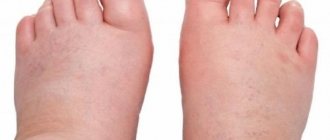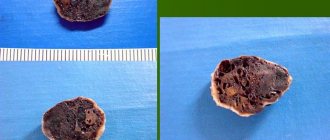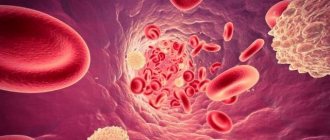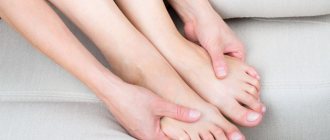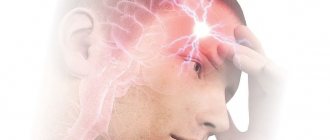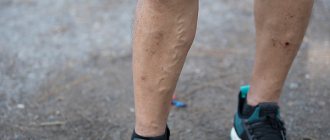Solcoseryl for hemorrhoids is especially effective during exacerbation of the disease. The drug relieves pain and inflammation, and also increases the regenerative abilities of tissues, which is important after surgery to remove hemorrhoids or in the presence of tears and ulcers of the anus. Solcoseryl is very convenient to use, as it can be used orally, parenterally and externally. Today the drug is available in several dosage forms: gel, paste, ointment, injection solution, tablets.
The undoubted advantage of Solcoseryl is the excellent ratio of quality, effectiveness and reasonable cost of the drug.
Composition and dosage forms of Solcoseryl
According to its pharmacological properties, Solcoseryl belongs to the category of biogenic stimulants.
The active ingredient of Solcoseryl is an extract from the blood of young calves - deproteinized hemodialysate, consisting exclusively of low molecular weight components. Among the active ingredients of Solcoseryl, cellular elements of the blood, oligopeptides, amino acids, nucleosides, and glycoproteins, which have the most healing properties, should be highlighted.
In the complex therapy of hemorrhoids and in the rehabilitation period after surgery, Solcoseryl is used in such dosage forms as:
- 5% ointment for external use;
- 10% gel for external use;
- injection solution;
- dragees and tablets.
The rich and unique composition of Solcoseryl, as well as the variety of release forms, makes it an integral part of antihemorrhoidal therapy, especially in postoperative patients.
Contraindications and side effects
Solcoseryl, like any medicine, is not suitable for all patients. It is contraindicated in the following conditions:
- individual sensitivity to the active substance;
- Injection solution for arrhythmia, pulmonary edema or renal pathologies should be used exclusively according to the doctor’s decision.
Patients with allergies should use any new medications with caution. Cream and gel cannot aggravate the patient's condition. The appearance of a rash, itching, swelling and redness of the mucous membranes are manifestations of a skin allergic reaction, in which the course of treatment must be stopped.
Medicinal properties of Solcoseryl
Solcoseryl has the following therapeutic effects:
- regenerating;
- restorative;
- angioprotective;
- antihypoxic;
- anti-inflammatory;
- antihistamine;
- cytoprotective.
The mechanism of action of Solcoseryl is that it activates the restoration of damaged tissues by increasing collagen synthesis.
Also involved in normalizing metabolic processes and accelerating the proliferation of cellular elements.
In addition, the drug facilitates the penetration of oxygen and glucose into cells, improving their absorption.
Solcoseryl also regulates the balance of oxidative reactions in affected tissues.
In this way, the formation of granulations (young tissue forms) in wounds is accelerated, swelling is reduced, and a protective film is formed on the surface of the defect.
Reviews about the drug
Irina: “I always have Solcoseryl in my medicine cabinet. Burns, cuts, abrasions - I treat everything with it, and it helps well, I have never left a scar with its help. A year ago I developed hemorrhoids. I immediately started looking for different recipes, read about different drugs, and even turned to traditional medicine. So, the same Solcoseryl cured me. I had ointment available at home, so I used that. I applied a small amount twice a day, and the disease went away in 2 weeks. True, I didn’t have any complications yet, the nodes were just a little enlarged and hurt.”
Elena: “A year ago I had surgery to remove hemorrhoids. It’s not very pleasant, but I delayed the treatment myself, I don’t argue. The doctor prescribed Solcoseryl gel to me so that the mucous membrane would heal faster and there would be no traces left. In addition to this, I used other means to relieve inflammation. I can say that I recovered quickly, there were practically no scars left, and hemorrhoids no longer bother me. I don’t want to end up on the surgeon’s table anymore, so I follow all the doctors’ recommendations.”
Anatoly: “I didn’t want to go to the doctors with such a problem, but in the end I had to. When hemorrhoids appeared, I listened to enough advice and began to be treated with traditional methods. I felt better for a short time, but the illness did not go away. When the nodes began to increase and blood began to be released frequently, I went to the proctologist. I managed to recover without surgery, but I had to buy several medications at once. Solcoseryl was also on this list, it was supposed to help quickly recover. In general, my hemorrhoids went away completely within a month, and I still keep the list with the doctor’s instructions just in case.”
Solcoseryl is a drug that is used, among other things, to treat hemorrhoids. Its main goal is to speed up regeneration processes and stop cell destruction. It contains a biologically active substance that can participate in metabolic processes at the cellular level and heal wounds. As metabolism is restored and the supply of oxygen to the cells is normalized, the remaining symptoms of hemorrhoids - itching, pain, inflammation - disappear. Reviews about the drug prove its effectiveness at different stages of the disease.
Solcoseryl ointment: features of use for hemorrhoids
Solcoseryl ointment for hemorrhoids is used as a component of complex treatment of the disease, as well as after surgery for the purpose of rehabilitation of patients.
The use of Solcoseryl ointment for hemorrhoids allows you to eliminate congestion in the veins of the anorectal zone, increase collagen synthesis and accelerate the healing of tears in the mucous membrane of the rectal canal and anus.
Before applying Solcoseryl, it is recommended to empty the intestines, as well as perform a hygienic toilet of the anus and genitals. The effect of the drug can be enhanced by baths with medicinal herbs, which are carried out before using the ointment.
Solcoseryl is applied in a thin layer and rubbed into the anal tissue in the morning and evening. The average duration of treatment is 2-3 weeks, but the attending physician has the right to adjust these periods.
The average cost of Solcoseryl ointment in Russian pharmacies is 190-240 rubles per tube (20 grams).
Important! Solcoseryl ointment can be used both to treat hemorrhoids and to prevent exacerbation of the process. In both the first and second cases, the drug is prescribed exclusively by the attending proctologist.
Indications for use
In addition to other diseases, Solcoseryl is used to treat external and internal hemorrhoids at different stages. At the beginning of the disease, it is prescribed as an independent remedy, and the effect of therapy will be faster. The main thing is to pay attention to the development of the first symptoms in time and begin treatment.
Symptoms that indicate inflammation of hemorrhoids:
- pain in the anus, which becomes more pronounced during bowel movements;
- a feeling of enlarged nodes, the effect of the presence of a foreign object in the rectum;
- disorders of the gastrointestinal tract, frequent constipation;
- thinning of the walls of hemorrhoidal veins, anal bleeding.
Over time, the disease may worsen. Anal fissures appear, which cause pain and discomfort. The nodes continue to increase in size, and with internal hemorrhoids they may fall out. The most serious complication for the patient is the entry of pathogenic microbes into the bloodstream and the development of sepsis (blood poisoning).
In the final stages, the nodes are removed surgically, since drug therapy can no longer produce results. During the rehabilitation period, Solcoseryl is used to speed up the healing processes of postoperative wounds and restoration of the mucous membrane. It is also useful for normalizing blood circulation and preventing relapses of the disease.
The gel contains twice as much active ingredient as the ointment. It is also called “jelly” because of its gelatinous consistency.
Solcoseryl gel: features of use for hemorrhoids
Solcoseryl gel has the same properties as ointment. The advantage of the gel is that it has a lighter structure than the ointment form, since it is made from a water base and does not contain fat. This feature of the gel ensures that the drug is absorbed faster and does not leave greasy marks on the laundry.
Solcoseryl gel is especially effective for acute and chronic anal tears, weeping ulcers and erosions of the anus.
Before using the gel, bowel movements and hygienic toileting of the perineum and genitals are performed. Then apply a thin layer of Solcoseryl gel to the anorectal area and rub in until completely absorbed.
The gel can be applied 1 to 3 times a day until the tears, ulcers or erosions of the anus are completely healed.
The cost of 10% Solcoseryl gel in pharmacies in our country ranges from 210 to 260 rubles per tube (20 grams).
Branch
An anal fissure is a defect in the form of a tear or open wound (ulcer) in the lining of the anal canal.
The anal canal is the final part of the large intestine, located between the rectum (the reservoir of stool) and the anus, through which stool passes out.
Symptoms of anal fissure
The most common symptoms are:
- acute pain at the time of defecation, which is accompanied by burning pain and can last for several hours.
- bleeding after bowel movements, which most people characterize as a small amount of scarlet blood in the stool or traces of blood on toilet paper.
When to go to the doctor
Go to the doctor if you think you have an anal fissure. Put aside the embarrassment, the problem of anal fissure is the third most common problem in the structure of diseases of the colon.
In most cases, anal fissures do not require any specialized treatment. However, contacting a specialized specialist will help rule out other diseases that occur under the guise of an anal fissure.
The doctor will also provide recommendations for individual treatment that will help relieve your symptoms and reduce the risk of relapse of the disease.
How is an examination performed for anal fissure?
The doctor will ask you about your symptoms and find out the nature of your pain. He may ask you about the frequency and nature of bowel movements. And, for sure, the doctor will need to examine the crack itself, by carefully spreading the buttocks.
When diagnosing an anal fissure, digital examination of the rectum is not always performed, as it can be painful.
If, in the opinion of a coloproctologist, an anal fissure is a manifestation of any of your other diseases, he can expand the examination and involve other specialists in consultation.
An extended examination may include a more detailed examination of the anus using an anesthetic to reduce pain.
In some cases, with fissures that are not amenable to conventional treatment, it is necessary to assess the tone of the anal sphincter (the sphincter is a muscular ring that opens and closes the anus).
What causes anal fissure?
— Constipation is the most common cause. Hard or large-volume fragments of feces damage the lining of the anal canal.
Other possible causes of anal fissures include:
- prolonged diarrhea.
- inflammatory diseases of the colon such as Crohn's disease and ulcerative colitis.
- pregnancy and childbirth.
- in some cases, sexually transmitted infections such as syphilis and herpes.
- a state of strong contraction (spasm) of the anal sphincter, leading to increased pressure in the anal canal, which contributes to its damage.
In many cases, the cause of an anal fissure is difficult to determine.
Who gets sick?
Every tenth person will develop anal fissure at one time or another in their lives.
Men and women of all age groups are equally prone to the formation of anal fissures. However, in most cases, cracks occur in children and young people aged 10 to 30 years.
Treatment and prevention of anal fissures.
Anal fissures usually heal within a few weeks or more without any treatment. However, the relapse rate is very high if the underlying cause of their occurrence, constipation, persists.
In some patients, symptoms of anal fissure may persist for 6 weeks or more (chronic form of the disease).
Measures taken independently by patients aimed at making stool easier can speed up the healing of existing cracks and reduce the risk of developing new cracks in the future.
To reduce pain, you can take regular painkillers (paracetamol or ibuprofen). Take warm baths for the perineum several times a day, preferably immediately after bowel movements during bowel movements.
Your doctor may recommend additional medications that will reduce the severity of your symptoms and help speed up the healing process.
The treatment regimen may also include pain-relieving ointments and laxatives, which make bowel movements easier.
Surgical treatment may be recommended for long-term non-healing cracks that are not amenable to conservative measures.
Surgery is an effective treatment for anal fissure in most cases. But, like any other operation, it can lead to complications, such as temporary or permanent loss of bowel control (incontinence of stool and gas).
Treatment of anal fissures.
Like any minor cuts or breaks in the skin, anal fissures often heal on their own within a few weeks.
However, if you have an anal fissure, it is better to consult a doctor who will prescribe you the necessary treatment, which will help you quickly get rid of the symptoms of the disease and make a full recovery.
Most anal fissures can easily recur after conservative treatment if you do not follow the recommendations below.
Independent activities.
There are several independent measures to relieve constipation, which in turn helps reduce pain with anal fissures.
Eliminating constipation allows you to heal an anal fissure and reduce the risk of its further development in the future.
Self-help measures to relieve constipation:
- Increase your daily dietary fiber intake by including high-fiber foods such as fruits, vegetables and whole grains.
- Avoid dehydration, drink more fluids and just water.
- Get more exercise. For example, take a daily walk or jog.
- Choose a convenient place and time when you can comfortably go to the toilet to have a bowel movement.
- Don't put off going to the toilet if you feel the urge to defecate.
- If you use wet wipes, make sure they do not contain fragrances or alcohol, which may cause discomfort or itching. If you use toilet paper, choose a soft variety and avoid using too much pressure when wiping.
- Take warm perineal baths several times a day, especially after bowel movements. This helps relieve spasm of the anus muscles.
Drugs.
There are a number of different medications that can be recommended by your doctor to reduce the symptoms of an anal fissure and speed up its healing.
Laxatives
Laxatives are a group of medications that promote freer passage of stool.
Adult patients with anal fissure are prescribed drugs that increase the volume of intestinal contents and osmosis.
Children with anal fissure are prescribed liquid forms of osmotic laxatives.
As a rule, treatment begins with small doses of laxatives. If necessary, the dose of the drug is increased every few days until loose, soft stools are established with a frequency of 1 time per day or 1 time every 2 days.
Attention! Without dieting, laxatives only help for a limited period of time. Do not use them for more than 7-10 days.
Painkillers
If you have prolonged burning pain after bowel movements, your doctor may recommend regular over-the-counter pain relievers such as paracetamol or ibuprofen.
But remember that some painkillers can cause constipation. Read the instructions carefully.
Ointment with nitroglycerin (glyceryl trinitrate)
If your symptoms do not go away within a week or two, you may be prescribed a topical ointment containing nitroglycerin. The ointment is applied directly to the crack area, usually 2 times a day.
Glycerin ointment promotes the expansion of blood vessels in the tissues surrounding the anus, which promotes better blood supply to the tissues in the fissure and, as a result, faster healing.
The use of these ointments leads to a decrease in pressure in the anal canal by relieving muscle spasms, which helps reduce pain.
Most acute anal fissures that last less than 6 weeks are cured with nitroglycerin ointment. In approximately seven cases of chronic anal fissure out of ten, with the correct use of nitroglycerin ointment, recovery occurs.
A common side effect of using nitroglycerin ointment is headache, occurring in 50% of patients.
Some patients experience dizziness or slight disturbances of consciousness after applying nitroglycerin ointment. Therefore, the ointment should be used with caution in children, pregnant and lactating women.
If you are bothered by headaches, you should reduce the amount of ointment applied. Using a small amount of ointment 5-6 times a day may be more effective than applying a large amount of ointment twice.
Apply the ointment only to the skin around the anus. Avoid getting the ointment into the anal canal.
As a rule, the duration of treatment with nitroglycerin ointment is approximately 6 weeks or continues until the crack is completely healed.
Local anesthetics
If you are experiencing severe pain, you may be advised to use a local anesthetic to reduce the sensitivity of the anus before bowel movements.
Local anesthetics are applied directly to the affected area. Their use does not have a direct therapeutic effect, but helps relieve pain.
The most commonly used anesthetic to treat anal fissure is lidocaine. Used as an ointment or gel. The duration of treatment is 1-2 weeks. As a rule, healing occurs within this time frame.
Calcium channel blockers
Calcium channel blockers, such as Diltiazem, are drugs commonly used to treat high blood pressure (hypertension).
At the same time, the effect of calcium channel blockers extends directly to the tissues around the anus, providing a proven positive effect in the healing of anal fissure in some patients.
Topical use of calcium channel blockers helps relax the anal sphincter muscles and improve blood flow in the tissues surrounding the anal fissure.
Side effects of calcium channel blockers include headache, dizziness, itching and burning at the site of application. All side effects of the drug disappear within a few days after use.
Topical calcium channel blockers are as effective as nitroglycerin ointments and are prescribed when other drugs do not help.
The duration of treatment with topical calcium channel blockers, as well as nitroglycerin ointment, lasts on average 6 weeks or until complete healing.
Botulinum toxin injections
The use of botulinum toxin in the treatment of anal fissure is a relatively new method of treatment. The method is used when other treatment methods are not effective. Botulinum toxin is a strong poison that is safe to use in small doses.
Botulinum toxin injections for anal fissure are performed in order to achieve paralysis of the anal sphincter muscles. This prevents muscle spasm, relieves pain and promotes healing of the crack. Currently, evaluation of the effectiveness of botulinum toxin in the treatment of anal fissure is ongoing.
The effect of botulinum toxin lasts for 2-3 months. This time is usually enough for the anal fissure to completely heal.
Observation
After several weeks of treatment, you should visit your doctor again. He will objectively assess the dynamics of the disease.
If the crack has completely healed, your doctor will schedule a follow-up examination in a few weeks.
If your anal fissure is a complex case and does not respond to treatment within 8 weeks, a consultation with a coloproctologist is necessary. He will assess the presence of indications for surgical treatment.
Operation
Surgical treatment is recommended if conservative treatment methods are ineffective.
Surgery is considered the most effective method for anal fissure, allowing to achieve good long-term results in 90% of cases. At the same time, there is a risk of complications.
There are a number of surgical operations used for anal fissure.
Lateral sphincterotomy
The lateral sphincterotomy technique involves making a small incision in the circular muscles of the anal sphincter, which reduces tension in the anal canal. Reducing stress promotes healing of the damage and reduces the chances of cracks reoccurring.
This is a relatively simple operation that is performed under general or epidural anesthesia. This means that you do not feel pain during the operation. Most often, the patient is in the hospital for the duration of the operation and a short period after the operation.
Lateral sphincterotomy is one of the most effective surgical methods for treating anal fissure with good long-term results. Most operated patients recover completely within 2-4 weeks.
Some patients (about 5%) who have undergone such an intervention are faced with the problem of incontinence of loose stools and gases as a result of damage to the muscular structures of the anal sphincter. Sphincter function recovers on its own within a few weeks.
Replacement of the defect with a skin flap
Skin flap surgery involves moving a piece of blood-supplied skin from another area of your body to the site of the anal defect to improve blood circulation in the tissues surrounding the crack.
This operation is recommended for the treatment of long-term anal fissures caused by pregnancy or trauma to the anal canal.
Solcoseryl ointment – price in the pharmacy, composition analysis
You will not like the cost of this drug. If 1-2 years ago it could be bought for 500-700 rubles, now the price for Solcoseryl ointment in a pharmacy will be from 2600 to 3000 rubles. This cost is indicated as of mid-October 2021 (and the drug is not available in many pharmacies), but below we will also talk about cheaper indirect analogues of this drug. Solcoseryl in the form of an ointment is available in aluminum tubes of 20 g and is sold in pharmacies without a prescription.
Solcoseryl ointment: composition
| Active substances (in 1 g of ointment) – → deproteinized dialysate from the blood of healthy dairy calves (in terms of dry matter). | 2.07 mg |
| Excipients - cholesterol, cetyl alcohol, white petrolatum, distilled water, as well as preservatives - methyl parahydroxybenzoate (E 218) and propyl parahydroxybenzoate (E 216). |
Composition analysis - the main and only active component of this drug is a deproteinized dialysate from the blood of dairy calves. This substance is very rich in low molecular weight organic compounds - amino acids, glycolipids, as well as oligopeptides and nucleosides. All these components, acting on damaged tissues, accelerate the healing processes in them. Studies have shown that the rate of regeneration when using this drug increases by approximately 30%.
Due to the large amount of organic components in the composition, the use of preservatives is also required. These are E 218 and E 216 (methyl parahydroxybenzoate and propyl parahydroxybenzoate), which can be classified as parabens. You need to pay attention to this point if you have allergic reactions to cosmetics or oral hygiene products, or if you have increased allergies in general.
Solcoseryl: analogues
It will be very difficult to find analogues for Solcoseryl ointment in Russian pharmacies. There are no analogues with exactly the same or even similar composition in pharmacies, but there are indirect analogues with a similar effect. Among drugs for external use that accelerate wound healing, we can name such drugs as Olazol and Vinizol (in the form of aerosols).
The advantage of these drugs is that they not only accelerate wound healing, but also have antimicrobial and analgesic effects (therefore, they are also suitable for wet, infected wounds). In turn, Solcoseryl ointment does not have an antimicrobial effect, and therefore it can only be applied to clean, dry wounds. By the way, the Olazol aerosol is made on the basis of chloramphenicol, sea buckthorn oil and anesthesin, and the price of this drug for 2021 will be only about 220 rubles.
Interaction
Solcoseryl injections should not be mixed when administered with other medications, especially with phytoextracts.
The pharmaceutical incompatibility of Solcoseryl in the form of an injection solution with parenteral forms has been established:
Ginkgo biloba extract,
naftidrofuryl,
bencyclane fumarate.
As solutions for diluting Solcoseryl injection, only isotonic sodium chloride solution and 5% glucose solution should be used.
The interaction of Solcoseryl with other topical medications has not been established.
Pharmacological action of the ointment
The pharmacological properties of the drug have not been fully studied. However, during the studies it was proven that solcoseryl has the following properties:
- in case of oxygen deficiency, its delivery to damaged cells is ensured;
- glucose transfer in metabolic disorders;
- is a catalyst for the formation of intracellular ATP;
- ensures the storage of energy in mitochondria generated during the transformation of nutrients;
- supports cells during nutritional deficiencies by supplying high-energy phosphates;
- prevents or prevents atypical changes with minor cell damage;
- “launches” the process of natural restoration of cells and tissues;
- activates the proliferation (division and formation) of fibroblasts that form the framework of connective fibers, and the formation of collagen filaments in the walls of blood vessels.
The ointment is widely used in cosmetology, gynecology, ophthalmology, and dentistry.
Main indications for use of the product
Ointment with solcoseryl is recommended for:
- minor skin damage in the form of abrasions;
- burns (except chemical) 1-2nd degree, which occur without the formation of exudate;
- frostbite of the 1st-2nd degree in the absence of wound weeping;
- psoriasis;
- to eliminate dry calluses and corns;
- to prevent the formation of scars after laser removal of warts or moles;
- atopic and seborrheic dermatitis;
- “sticking” in the corners of the mouth;
- drying of the nasal mucosa;
- in the treatment of wounds that heal poorly, including trophic ulcers and bedsores, after removal of dead tissue.
As a rule, a gel with solcoseryl is first applied to treat the wound surface with the separation of exudate. After the first signs of wound granulation appear, therapy is continued with the drug in the form of an ointment.
Differences between the ointment form of solcoseryl and the gel form
Pharmacies offer 2 forms of the drug intended for external local use. How do they differ and is it necessary to pay attention to such nuances?
The main differences between the forms are due to the excipients. Thus, solcoseryl gel does not contain fatty bases, which is why it is quickly washed off with warm water and removed from the surface of the skin. Due to this, it is the gel form that stimulates the formation of granulation tissue and the elimination of wound exudate.
When the wound dries out and signs of granulation appear, it would be more appropriate to use ointment. The fatty base of the drug forms a protective film on the surface of the wound, so the healing process is noticeably faster. In addition, solcoseryl ointment softens the surface of the wound, thereby avoiding the appearance of scars and other skin defects.
Indications for the drug Solcoseryl
Solcoseryl solution for injection.
Occlusive diseases of peripheral arteries in stages III–IV according to Fontaine in patients with contraindications/intolerance to other medications;
chronic venous insufficiency, accompanied by trophic disorders (Ulcera cruris), in cases of their persistent course;
disorders of cerebral metabolism and blood circulation (ischemic and hemorrhagic stroke, traumatic brain injury).
Solcoseryl gel, ointment.
Minor damage (abrasions, scratches, cuts).
1st and 2nd degree burns (sunburn, thermal burns).
Frostbite.
Difficult-to-heal wounds (including trophic ulcers and bedsores).




